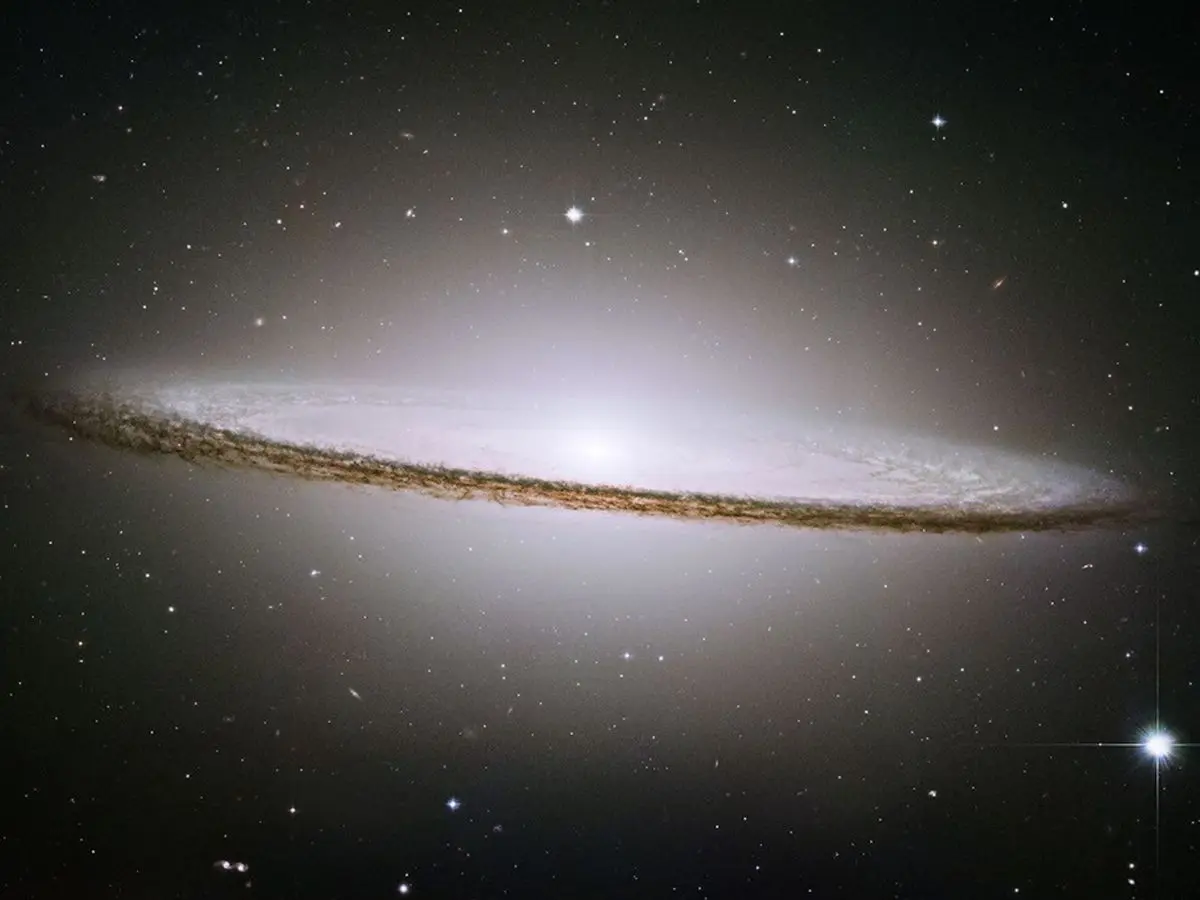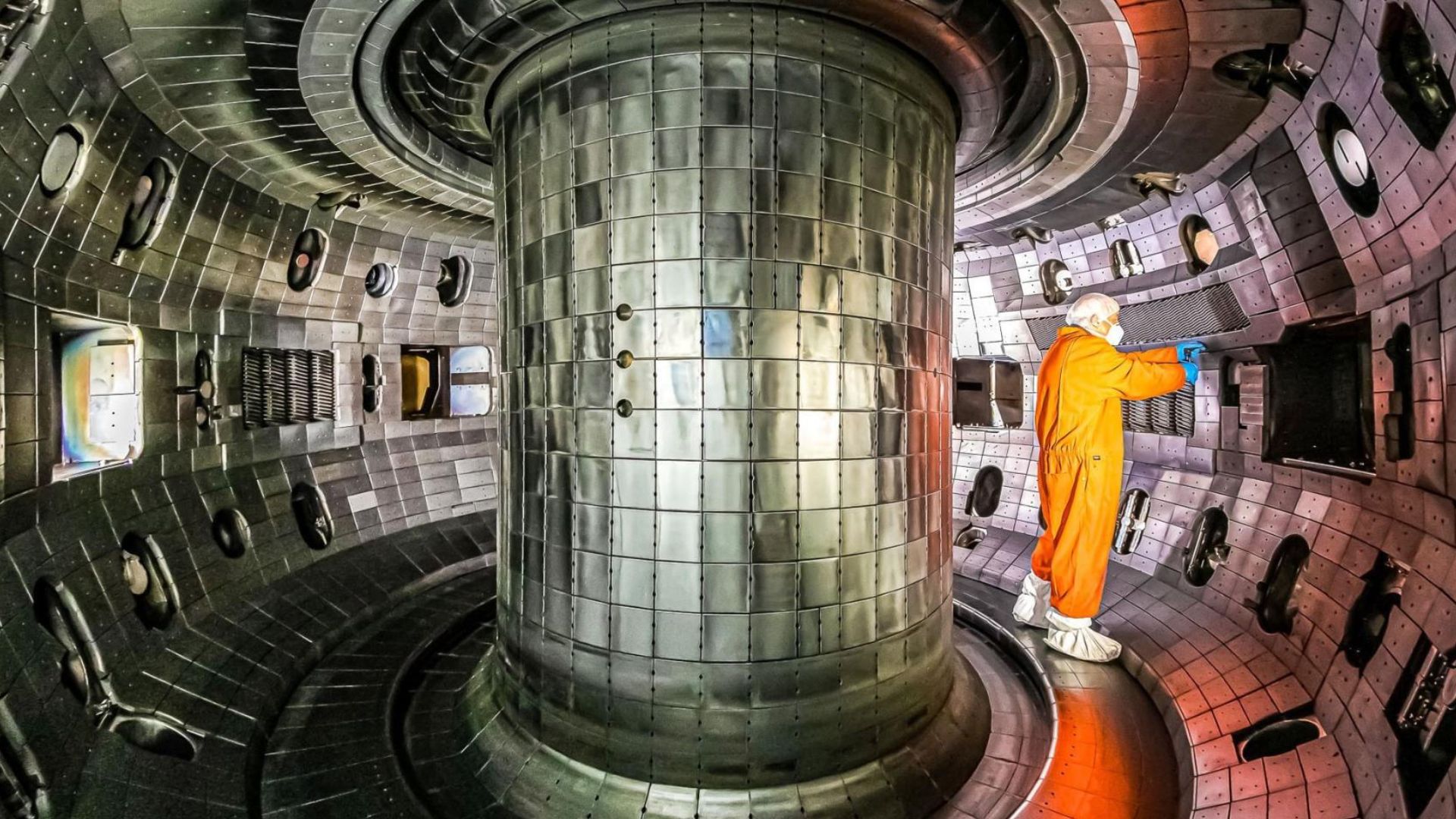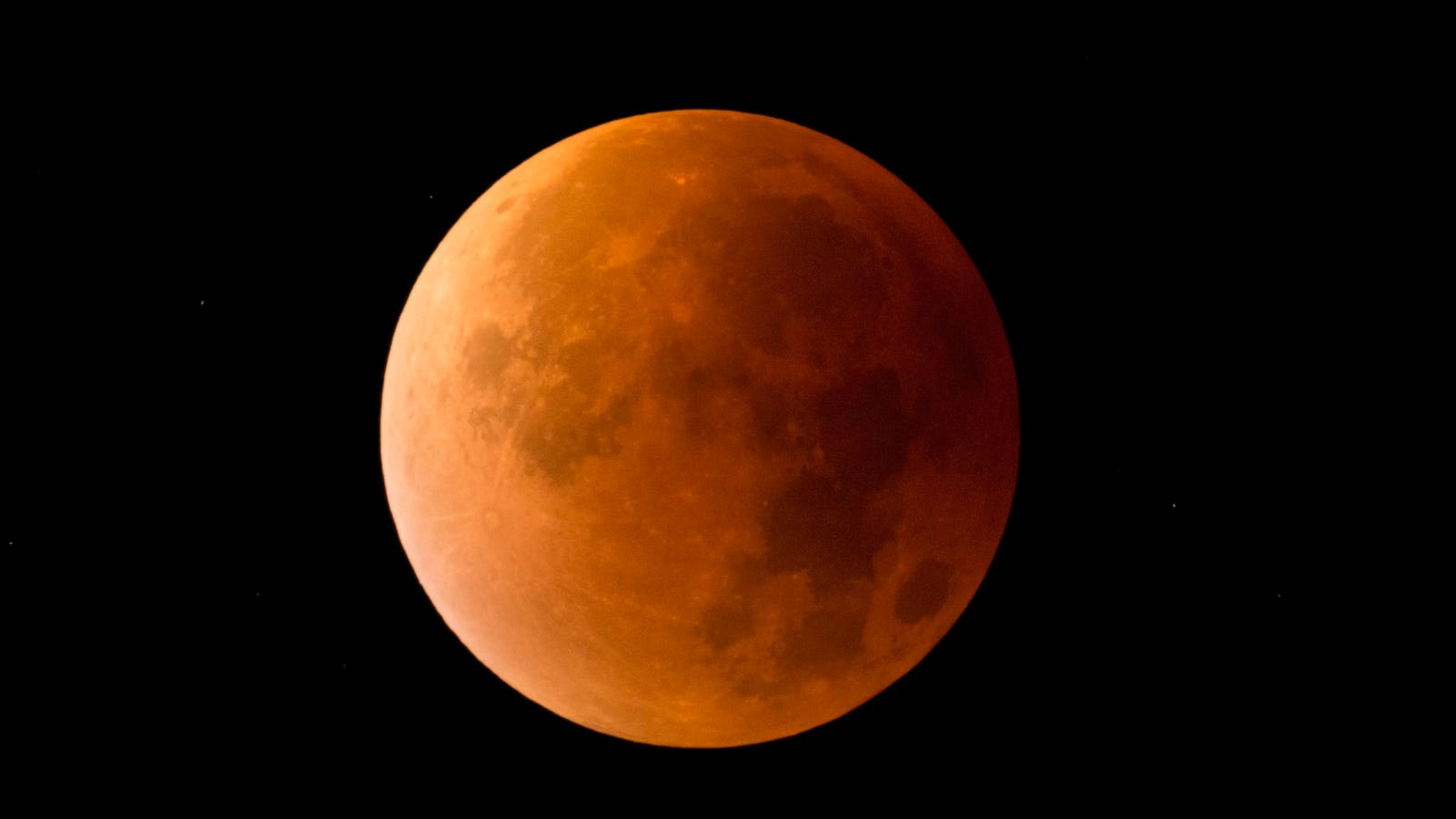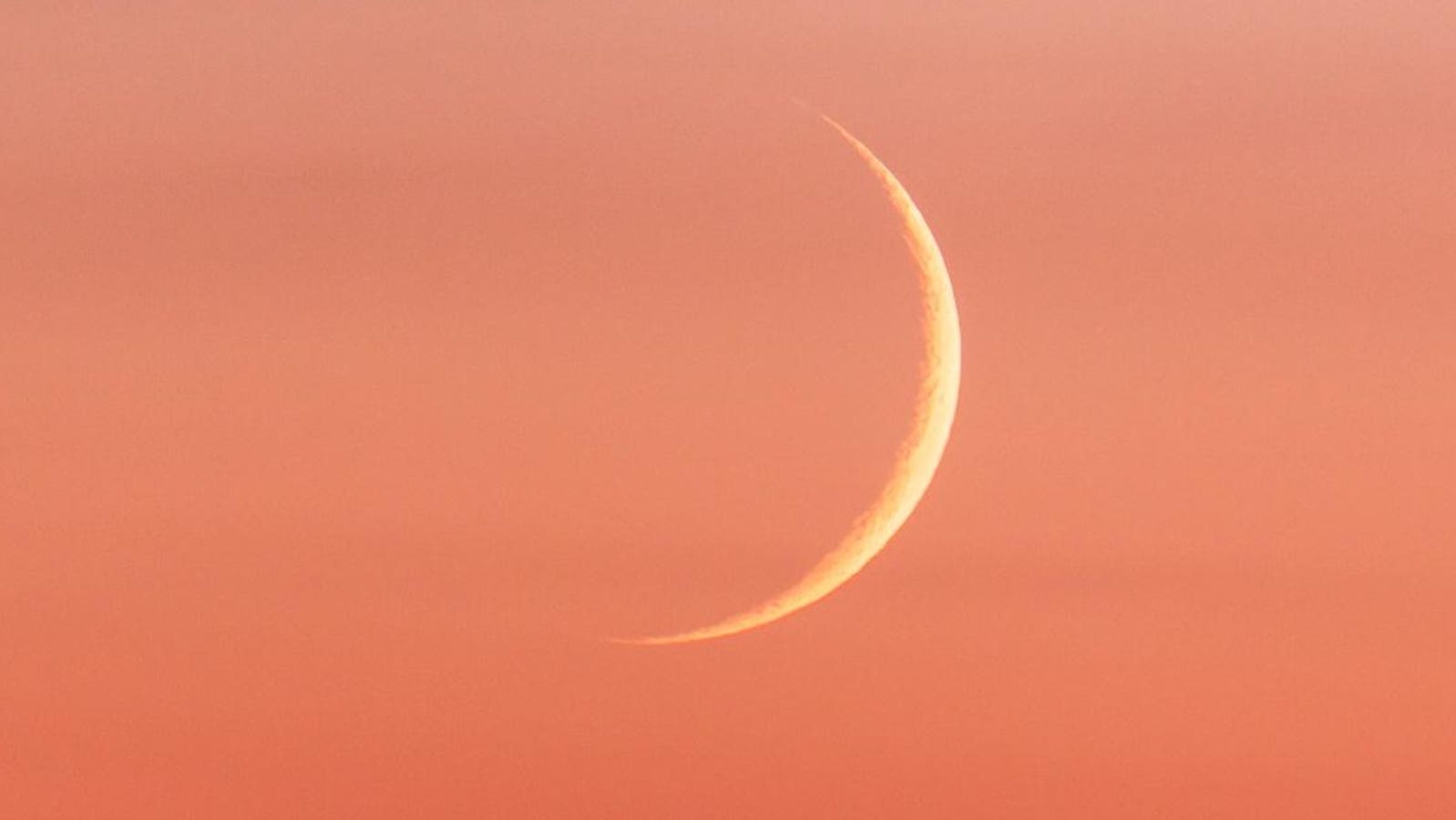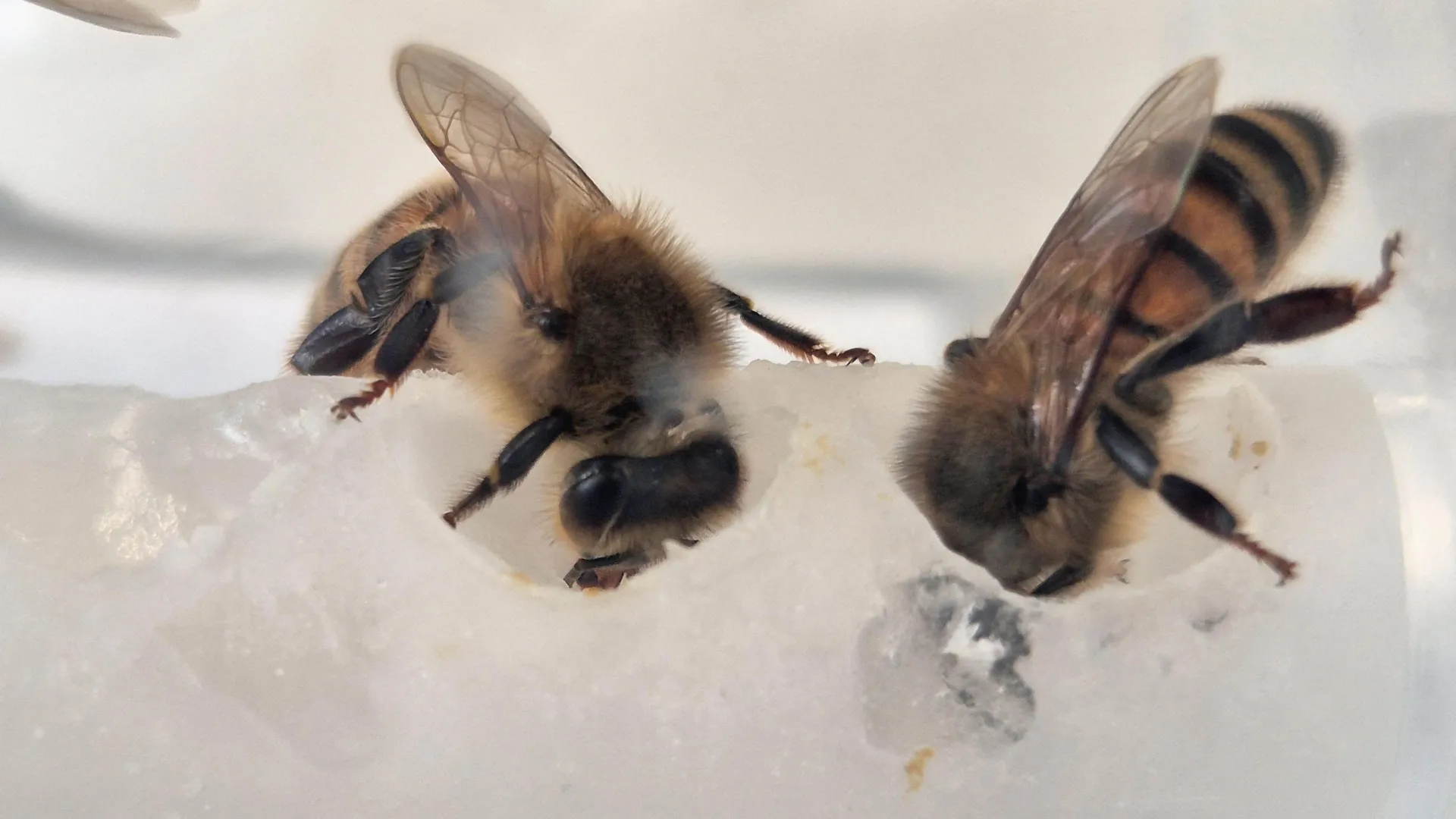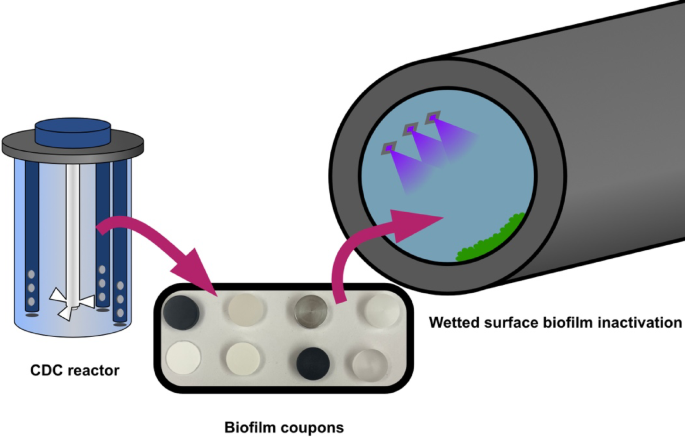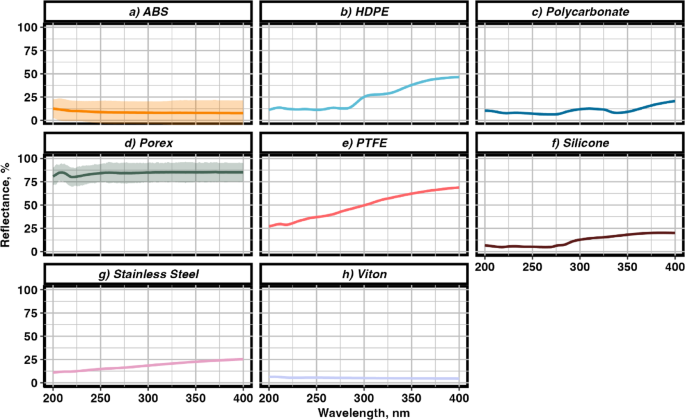Sessa B. Shaping the renaissance of psychedelic research. The Lancet. 2012;380:200–1.
Google Scholar
Nichols DE. Psychedelics. Pharmacol Rev. 2016;68:264–355.
CAS
PubMed
PubMed Central
Google Scholar
Davis AK, Barrett FS, May DG, Cosimano MP, Sepeda ND, Johnson MW, et al. Effects of psilocybin-assisted therapy on major depressive disorder: a randomized clinical trial. JAMA Psychiatry. 2021;78:481–9.
PubMed
Google Scholar
Goodwin GM, Croal M, Feifel D, Kelly JR, Marwood L, Mistry S, et al. Psilocybin for treatment resistant depression in patients taking a concomitant SSRI medication. Neuropsychopharmacol Off Publ Am Coll Neuropsychopharmacol. 2023;48:1492–9.
CAS
Google Scholar
Results Posted | A Double-Blind Trial of Psilocybin-Assisted Treatment of Alcohol Dependence | ClinicalTrials.gov. https://clinicaltrials.gov/study/NCT02061293. Accessed 15 July 2024.
Study Details | LSD Treatment for Persons With Alcohol Use Disorder | ClinicalTrials.gov. https://clinicaltrials.gov/study/NCT05474989. Accessed 15 July 2024.
Study Details | Psilocybin-Assisted Psychotherapy in Adults With Alcohol Use Disorder (AUD) | ClinicalTrials.gov. https://clinicaltrials.gov/study/NCT05646303. Accessed 15 July 2024.
Study Details | Psilocybin as a Treatment for Anorexia Nervosa: A Pilot Study | ClinicalTrials.gov. https://clinicaltrials.gov/study/NCT04505189. Accessed 15 July 2024.
Study Details | Evaluation of Psilocybin in Anorexia Nervosa: Safety and Efficacy | ClinicalTrials.gov. https://clinicaltrials.gov/study/NCT04661514. Accessed 15 July 2024.
Study Details | Psilocybin in Co-occuring Major Depressive Disorder and Borderline Personality Disorder | ClinicalTrials.gov. https://clinicaltrials.gov/study/NCT05399498. Accessed 15 July 2024.
Study Details | The Safety and Tolerability of COMP360 in Participants With Post-traumatic Stress Disorder | ClinicalTrials.gov. https://clinicaltrials.gov/study/NCT05312151. Accessed 15 July 2024.
Study Details | Phase 2 Clinical Trial of GH001 in Bipolar II Disorder | ClinicalTrials.gov. https://clinicaltrials.gov/study/NCT05839509. Accessed 15 July 2024.
Study Details | Outpatient Buprenorphine Induction With Psilocybin for Opioid Use Disorder | ClinicalTrials.gov. https://clinicaltrials.gov/study/NCT06067737. Accessed 15 July 2024.
Study Details | Psilocybin-facilitated Smoking Cessation Treatment: A Pilot Study | ClinicalTrials.gov. https://clinicaltrials.gov/study/NCT01943994. Accessed 15 July 2024.
Study Details | A Phase 2, Randomized, Double-Blind, Placebo-Controlled Study to Evaluate the Efficacy and Safety of up to Two Doses of Psilocybin for the Treatment of Major Depressive Disorder in Adults With Cancer | ClinicalTrials.gov. https://clinicaltrials.gov/study/NCT05947383. Accessed 15 July 2024.
Results Posted | Psychopharmacology of Psilocybin in Cancer Patients | ClinicalTrials.gov. https://clinicaltrials.gov/study/NCT00465595. Accessed 15 July 2024.
Olson DE. Psychoplastogens: a promising class of plasticity-promoting neurotherapeutics. J Exp Neurosci. 2018;12:1179069518800508.
PubMed
PubMed Central
Google Scholar
Drevets WC, Ongür D, Price JL. Neuroimaging abnormalities in the subgenual prefrontal cortex: implications for the pathophysiology of familial mood disorders. Mol Psychiatry. 1998;3:220–6.
CAS
PubMed
Google Scholar
Drevets WC. Neuroimaging studies of mood disorders. Biol Psychiatry. 2000;48:813–29.
CAS
PubMed
Google Scholar
Cui L, Li S, Wang S, Wu X, Liu Y, Yu W, et al. Major depressive disorder: hypothesis, mechanism, prevention and treatment. Signal Transduct Target Ther. 2024;9:1–32.
CAS
Google Scholar
Molendijk ML, Bus BAA, Spinhoven P, Penninx BWJH, Kenis G, Prickaerts J, et al. Serum levels of brain-derived neurotrophic factor in major depressive disorder: state–trait issues, clinical features and pharmacological treatment. Mol Psychiatry. 2011;16:1088–95.
CAS
PubMed
Google Scholar
Malberg JE, Eisch AJ, Nestler EJ, Duman RS. Chronic antidepressant treatment increases neurogenesis in adult rat hippocampus. J Neurosci. 2000;20:9104–10.
CAS
PubMed
PubMed Central
Google Scholar
Olson DE. The Subjective effects of psychedelics may not be necessary for their enduring therapeutic effects. ACS Pharmacol Transl Sci. 2021;4:563–7.
CAS
PubMed
Google Scholar
Yaden DB, Griffiths RR. The subjective effects of psychedelics are necessary for their enduring therapeutic effects. ACS Pharmacol Transl Sci. 2021;4:568–72.
CAS
PubMed
Google Scholar
Lewis V, Bonniwell EM, Lanham JK, Ghaffari A, Sheshbaradaran H, Cao AB, et al. A non-hallucinogenic LSD analog with therapeutic potential for mood disorders. Cell Rep. 2023;42:112203.
CAS
PubMed
PubMed Central
Google Scholar
Cameron LP, Tombari RJ, Lu J, Pell AJ, Hurley ZQ, Ehinger Y, et al. A non-hallucinogenic psychedelic analogue with therapeutic potential. Nature. 2021;589:474–9.
CAS
PubMed
Google Scholar
Cao D, Yu J, Wang H, Luo Z, Liu X, He L, et al. Structure-based discovery of nonhallucinogenic psychedelic analogs. Science. 2022;375:403–11.
CAS
PubMed
Google Scholar
Shahar O, Botvinnik A, Esh-Zuntz N, Brownstien M, Wolf R, Lotan A, et al. Role of 5-HT2A, 5-HT2C, 5-HT1A and TAAR1 Receptors in the Head Twitch Response Induced by 5-Hydroxytryptophan and Psilocybin: Translational Implications. Int J Mol Sci. 2022;23:14148.
CAS
PubMed
PubMed Central
Google Scholar
Cameron LP, Patel SD, Vargas MV, Barragan EV, Saeger HN, Warren HT, et al. 5-HT2ARs mediate therapeutic behavioral effects of psychedelic tryptamines. ACS Chem Neurosci. 2023;14:351–8.
CAS
PubMed
Google Scholar
Desouza LA, Benekareddy M, Fanibunda SE, Mohammad F, Janakiraman B, Ghai U, et al. The hallucinogenic Serotonin2A receptor agonist, 2,5-Dimethoxy-4-Iodoamphetamine, promotes cAMP response element binding protein-dependent gene expression of specific plasticity-associated genes in the rodent neocortex. Front Mol Neurosci. 2021;14:790213.
CAS
PubMed
PubMed Central
Google Scholar
Shao L-X, Liao C, Gregg I, Davoudian PA, Savalia NK, Delagarza K, et al. Psilocybin induces rapid and persistent growth of dendritic spines in frontal cortex in vivo. Neuron. 2021;109:2535–2544.e4.
CAS
PubMed
PubMed Central
Google Scholar
Ly C, Greb AC, Cameron LP, Wong JM, Barragan EV, Wilson PC, et al. Psychedelics promote structural and functional neural plasticity. Cell Rep. 2018;23:3170–82.
CAS
PubMed
PubMed Central
Google Scholar
Revenga M, de la F, Zhu B, Guevara CA, Naler LB, Saunders JM, Zhou Z, et al. Prolonged epigenomic and synaptic plasticity alterations following single exposure to a psychedelic in mice. Cell Rep. 2021;37:109836.
PubMed Central
Google Scholar
Vaidya VA, Marek GJ, Aghajanian GK, Duman RS. 5-HT2A receptor-mediated regulation of brain-derived neurotrophic factor mRNA in the hippocampus and the neocortex. J Neurosci. 1997;17:2785–95.
CAS
PubMed
PubMed Central
Google Scholar
Vargas MV, Dunlap LE, Dong C, Carter SJ, Tombari RJ, Jami SA, et al. Psychedelics promote neuroplasticity through the activation of intracellular 5-HT2A receptors. Science. 2023. 17 February 2023. https://doi.org/10.1126/science.adf0435.
Hesselgrave N, Troppoli TA, Wulff AB, Cole AB, Thompson SM. Harnessing psilocybin: antidepressant-like behavioral and synaptic actions of psilocybin are independent of 5-HT2R activation in mice. Proc Natl Acad Sci. 2021;118:e2022489118.
CAS
PubMed
PubMed Central
Google Scholar
Moliner R, Girych M, Brunello CA, Kovaleva V, Biojone C, Enkavi G, et al. Psychedelics promote plasticity by directly binding to BDNF receptor TrkB. Nat Neurosci. 2023;26:1032–41.
PubMed
PubMed Central
Google Scholar
Rush AJ, Trivedi MH, Wisniewski SR, Nierenberg AA, Stewart JW, Warden D, et al. Acute and longer-term outcomes in depressed outpatients requiring one or several treatment steps: a STAR*D report. Am J Psychiatry. 2006;163:1905–17.
PubMed
Google Scholar
Stone MB, Yaseen ZS, Miller BJ, Richardville K, Kalaria SN, Kirsch I. Response to acute monotherapy for major depressive disorder in randomized, placebo controlled trials submitted to the US Food and Drug Administration: individual participant data analysis. BMJ. 2022;378:e067606.
PubMed
PubMed Central
Google Scholar
Fournier JC, DeRubeis RJ, Hollon SD, Dimidjian S, Amsterdam JD, Shelton RC, et al. Antidepressant drug effects and depression severity: a patient-level meta-analysis. JAMA. 2010;303:47–53.
CAS
PubMed
PubMed Central
Google Scholar
Lukas RJ, Muresan AZ, Damaj MI, Blough BE, Huang X, Navarro HA, et al. Synthesis and characterization of in vitro and in vivo profiles of hydroxybupropion analogues: aids to smoking cessation. J Med Chem. 2010;53:4731–48.
CAS
PubMed
PubMed Central
Google Scholar
Wang H-Q, Wang Z-Z, Chen N-H. The receptor hypothesis and the pathogenesis of depression: Genetic bases and biological correlates. Pharmacol Res. 2021;167:105542.
CAS
PubMed
Google Scholar
Stahl SM. Stahl’s essential psychopharmacology: Neuroscientific basis and practical applications. 4th ed. New York, NY, US: Cambridge University Press; 2013.
Google Scholar
Undurraga J, Baldessarini RJ. Direct comparison of tricyclic and serotonin-reuptake inhibitor antidepressants in randomized head-to-head trials in acute major depression: Systematic review and meta-analysis. J Psychopharmacol (Oxf). 2017;31:1184–9.
CAS
Google Scholar
Haase J, Brown E. Integrating the monoamine, neurotrophin and cytokine hypotheses of depression — A central role for the serotonin transporter? Pharmacol Ther. 2015;147:1–11.
CAS
PubMed
Google Scholar
Oquendo MA, Placidi GPA, Malone KM, Campbell C, Keilp J, Brodsky B, et al. Positron emission tomography of regional brain metabolic responses to a serotonergic challenge and lethality of suicide attempts in major depression. Arch Gen Psychiatry. 2003;60:14–22.
PubMed
Google Scholar
Drevets WC, Videen TO, Price JL, Preskorn SH, Carmichael ST, Raichle ME. A functional anatomical study of unipolar depression. J Neurosci. 1992;12:3628–41.
CAS
PubMed
PubMed Central
Google Scholar
Liu W, Ge T, Leng Y, Pan Z, Fan J, Yang W, et al. The role of neural plasticity in depression: from hippocampus to prefrontal cortex. Neural Plast. 2017;2017:6871089.
PubMed
PubMed Central
Google Scholar
Chan SWY, Harmer CJ, Norbury R, O’Sullivan U, Goodwin GM, Portella MJ. Hippocampal volume in vulnerability and resilience to depression. J Affect Disord. 2016;189:199–202.
PubMed
Google Scholar
Bartkowska K, Paquin A, Gauthier AS, Kaplan DR, Miller FD. Trk signaling regulates neural precursor cell proliferation and differentiation during cortical development. Development. 2007;134:4369–80.
CAS
PubMed
Google Scholar
Minichiello L. TrkB signalling pathways in LTP and learning. Nat Rev Neurosci. 2009;10:850–60.
CAS
PubMed
Google Scholar
Bus BaA, Molendijk ML, Tendolkar I, Penninx BWJH, Prickaerts J, Elzinga BM, et al. Chronic depression is associated with a pronounced decrease in serum brain-derived neurotrophic factor over time. Mol Psychiatry. 2015;20:602–8.
CAS
PubMed
Google Scholar
Talaee N, Azadvar S, Khodadadi S, Abbasi N, Asli-Pashaki ZN, Mirabzadeh Y, et al. Comparing the effect of fluoxetine, escitalopram, and sertraline, on the level of BDNF and depression in preclinical and clinical studies: a systematic review. Eur J Clin Pharmacol. 2024;80:983–1016.
PubMed
Google Scholar
Madsen CA, Navarro ML, Elfving B, Kessing LV, Castrén E, Mikkelsen JD, et al. The effect of antidepressant treatment on blood BDNF levels in depressed patients: a review and methodological recommendations for assessment of BDNF in blood. Eur Neuropsychopharmacol. 2024;87:35–55.
CAS
PubMed
Google Scholar
Ray MT, Shannon Weickert C, Webster MJ. Decreased BDNF and TrkB mRNA expression in multiple cortical areas of patients with schizophrenia and mood disorders. Transl Psychiatry. 2014;4:e389.
CAS
PubMed
PubMed Central
Google Scholar
Rahmani F, Saghazadeh A, Rahmani M, Teixeira AL, Rezaei N, Aghamollaii V, et al. Plasma levels of brain-derived neurotrophic factor in patients with Parkinson disease: a systematic review and meta-analysis. Brain Res. 2019;1704:127–36.
CAS
PubMed
Google Scholar
Kim OY, Song J. The importance of BDNF and RAGE in diabetes-induced dementia. Pharmacol Res. 2020;160:105083.
CAS
PubMed
Google Scholar
Davarpanah M, Shokri-mashhadi N, Ziaei R, Saneei P. A systematic review and meta-analysis of association between brain-derived neurotrophic factor and type 2 diabetes and glycemic profile. Sci Rep. 2021;11:1–14.
Google Scholar
Nutt D, King LA, Saulsbury W, Blakemore C. Development of a rational scale to assess the harm of drugs of potential misuse. The Lancet. 2007;369:1047–53.
Google Scholar
Yanagita T. Intravenous self-administration of (−)-cathinone and 2-amino-1-(2,5-dimethoxy-4-methyl)phenylpropane in rhesus monkeys. Drug Alcohol Depend. 1986;17:135–41.
CAS
PubMed
Google Scholar
Deneau G, Yanagita T, Seevers MH. Self-administration of psychoactive substances by the monkey. Psychopharmacologia. 1969;16:30–48.
CAS
PubMed
Google Scholar
Becker AM, Klaiber A, Holze F, Istampoulouoglou I, Duthaler U, Varghese N, et al. Ketanserin reverses the acute response to LSD in a randomized, double-blind, placebo-controlled, crossover study in healthy participants. Int J Neuropsychopharmacol. 2023;26:97–106.
CAS
PubMed
Google Scholar
Kometer M, Schmidt A, Jäncke L, Vollenweider FX. Activation of serotonin 2A receptors underlies the psilocybin-induced effects on α oscillations, N170 visual-evoked potentials, and visual hallucinations. J Neurosci. 2013;33:10544–51.
CAS
PubMed
PubMed Central
Google Scholar
Holze F, Vizeli P, Ley L, Müller F, Dolder P, Stocker M, et al. Acute dose-dependent effects of lysergic acid diethylamide in a double-blind placebo-controlled study in healthy subjects. Neuropsychopharmacology. 2021;46:537–44.
CAS
PubMed
Google Scholar
Valle M, Maqueda AE, Rabella M, Rodríguez-Pujadas A, Antonijoan RM, Romero S, et al. Inhibition of alpha oscillations through serotonin-2A receptor activation underlies the visual effects of ayahuasca in humans. Eur Neuropsychopharmacol. 2016;26:1161–75.
CAS
PubMed
Google Scholar
Kometer M, Schmidt A, Bachmann R, Studerus E, Seifritz E, Vollenweider FX. Psilocybin biases facial recognition, goal-directed behavior, and mood state toward positive relative to negative emotions through different serotonergic subreceptors. Biol Psychiatry. 2012;72:898–906.
CAS
PubMed
Google Scholar
Vollenweider FX, Vollenweider-Scherpenhuyzen MFI, Bäbler A, Vogel H, Hell D. Psilocybin induces schizophrenia-like psychosis in humans via a serotonin-2 agonist action. NeuroReport. 1998;9:3897.
CAS
PubMed
Google Scholar
Quednow BB, Kometer M, Geyer MA, Vollenweider FX. Psilocybin-Induced deficits in automatic and controlled inhibition are attenuated by ketanserin in healthy human volunteers. Neuropsychopharmacology. 2012;37:630–40.
CAS
PubMed
Google Scholar
Preller KH, Herdener M, Pokorny T, Planzer A, Kraehenmann R, Stämpfli P, et al. The fabric of meaning and subjective effects in LSD-Induced states depend on serotonin 2A receptor activation. Curr Biol. 2017;27:451–7.
CAS
PubMed
Google Scholar
Klaiber A, Schmid Y, Becker AM, Straumann I, Erne L, Jelusic A, et al. Acute dose-dependent effects of mescaline in a double-blind placebo-controlled study in healthy subjects. Transl Psychiatry. 2024;14:1–8.
Google Scholar
Holze F, Madsen MK, Svarer C, Gillings N, Stenbaek DS, Rudin D, et al. Ketanserin exhibits dose- and concentration-proportional serotonin 2A receptor occupancy in healthy individuals: relevance for psychedelic research. Eur Neuropsychopharmacol. 2024;88:43–48.
CAS
PubMed
Google Scholar
Casey AB, Cui M, Booth RG, Canal CE. “Selective” serotonin 5-HT2A receptor antagonists. Biochem Pharmacol. 2022;200:115028.
CAS
PubMed
PubMed Central
Google Scholar
Madsen MK, Fisher PM, Burmester D, Dyssegaard A, Stenbæk DS, Kristiansen S, et al. Psychedelic effects of psilocybin correlate with serotonin 2A receptor occupancy and plasma psilocin levels. Neuropsychopharmacology. 2019;44:1328–34.
CAS
PubMed
PubMed Central
Google Scholar
Corne SJ, Pickering RW. A possible correlation between drug-induced hallucinations in man and a behavioural response in mice. Psychopharmacologia. 1967;11:65–78.
CAS
PubMed
Google Scholar
Halberstadt AL, Chatha M, Klein AK, Wallach J, Brandt SD. Correlation between the potency of hallucinogens in the mouse head-twitch response assay and their behavioral and subjective effects in other species. Neuropharmacology. 2020;167:107933.
CAS
PubMed
PubMed Central
Google Scholar
Fiorella D, Rabin RA, Winter JC. The role of the 5-HT2A and 5-HT2C receptors in the stimulus effects of hallucinogenic drugs I: Antagonist correlation analysis. Psychopharmacology (Berl). 1995;121:347–56.
CAS
PubMed
Google Scholar
Halberstadt AL, Koedood L, Powell SB, Geyer MA. Differential contributions of serotonin receptors to the behavioral effects of indoleamine hallucinogens in mice. J Psychopharmacol (Oxf). 2011;25:1548–61.
CAS
Google Scholar
Canal CE, Olaghere da Silva UB, Gresch PJ, Watt EE, Sanders-Bush E, Airey DC. The serotonin 2C receptor potently modulates the head-twitch response in mice induced by a phenethylamine hallucinogen. Psychopharmacology (Berl). 2010;209:163–74.
CAS
PubMed
Google Scholar
Hutten NRPW, Mason NL, Dolder PC, Theunissen EL, Holze F, Liechti ME, et al. Low Doses of LSD Acutely Increase BDNF Blood Plasma Levels in Healthy Volunteers. ACS Pharmacol Transl Sci. 2021;4:461–6.
CAS
PubMed
Google Scholar
de Almeida RN, de Galvão ACM, da Silva FS, Silva EADS, Palhano-Fontes F, Maia-de-Oliveira JP, et al. Modulation of serum brain-derived neurotrophic factor by a single dose of ayahuasca: observation from a randomized controlled trial. Front Psychol. 2019;10:1234.
PubMed
PubMed Central
Google Scholar
Becker AM, Holze F, Grandinetti T, Klaiber A, Toedtli VE, Kolaczynska KE, et al. Acute effects of psilocybin after escitalopram or placebo pretreatment in a randomized, double-blind, placebo-controlled, crossover study in healthy subjects. Clin Pharmacol Ther. 2022;111:886–95.
CAS
PubMed
Google Scholar
Holze F, Ley L, Müller F, Becker AM, Straumann I, Vizeli P, et al. Direct comparison of the acute effects of lysergic acid diethylamide and psilocybin in a double-blind placebo-controlled study in healthy subjects. Neuropsychopharmacology. 2022;47:1180–7.
CAS
PubMed
PubMed Central
Google Scholar
Holze F, Vizeli P, Müller F, Ley L, Duerig R, Varghese N, et al. Distinct acute effects of LSD, MDMA, and D-amphetamine in healthy subjects. Neuropsychopharmacology. 2020;45:462–71.
CAS
PubMed
Google Scholar
Rocha JM, Rossi GN, de Lima Osório F, Bouso JC, de Oliveira Silveira G, Yonamine M, et al. Effects of ayahuasca on the recognition of facial expressions of emotions in naive healthy volunteers: a pilot, proof-of-concept, randomized controlled trial. J Clin Psychopharmacol. 2021;41:267.
PubMed
Google Scholar
Vogt SB, Ley L, Erne L, Straumann I, Becker AM, Klaiber A, et al. Acute effects of intravenous DMT in a randomized placebo-controlled study in healthy participants. Transl Psychiatry. 2023;13:172.
CAS
PubMed
PubMed Central
Google Scholar
Shafiee A, Arabzadeh Bahri R, Rafiei MA, Esmaeilpur Abianeh F, Razmara P, Jafarabady K, et al. The effect of psychedelics on the level of brain-derived neurotrophic factor: a systematic review and meta-analysis. J Psychopharmacol (Oxf). 2024;38:425–31.
Google Scholar
Le Nedelec M, Glue P, Winter H, Goulton C, Broughton L, Medlicott N. Acute low-dose ketamine produces a rapid and robust increase in plasma BDNF without altering brain BDNF concentrations. Drug Deliv Transl Res. 2018;8:780–6.
PubMed
Google Scholar
Ly C, Greb AC, Vargas MV, Duim WC, Grodzki ACG, Lein PJ, et al. Transient stimulation with psychoplastogens is sufficient to initiate neuronal growth. ACS Pharmacol Transl Sci. 2021;4:452–60.
CAS
PubMed
Google Scholar
Raval NR, Johansen A, Donovan LL, Ros NF, Ozenne B, Hansen HD, et al. A Single dose of psilocybin increases synaptic density and decreases 5-HT2A receptor density in the pig brain. Int J Mol Sci. 2021;22:835.
CAS
PubMed
PubMed Central
Google Scholar
Zhao X, Du Y, Yao Y, Dai W, Yin Y, Wang G, et al. Psilocybin promotes neuroplasticity and induces rapid and sustained antidepressant-like effects in mice. J Psychopharmacol (Oxf). 2024;38:489–99.
CAS
Google Scholar
Calder AE, Hasler G. Towards an understanding of psychedelic-induced neuroplasticity. Neuropsychopharmacology. 2023;48:104–12.
PubMed
Google Scholar
Benekareddy M, Nair AR, Dias BG, Suri D, Autry AE, Monteggia LM, et al. Induction of the plasticity-Associated immediate early gene Arc by stress and hallucinogens: role of brain-derived neurotrophic factor. Int J Neuropsychopharmacol. 2013;16:405–15.
CAS
PubMed
Google Scholar
Ito H, Nyberg S, Halldin C, Lundkvist C, Farde L. PET imaging of central 5-HT2A receptors with carbon-11-MDL 100,907. J Nucl Med. 1998;39:208–14.
CAS
PubMed
Google Scholar
Beliveau V, Ganz M, Feng L, Ozenne B, Højgaard L, Fisher PM, et al. A High-Resolution in vivo atlas of the human brain’s serotonin system. J Neurosci. 2017;37:120–8.
CAS
PubMed
PubMed Central
Google Scholar
Pompeiano M, Palacios JM, Mengod G. Distribution of the serotonin 5-HT2 receptor family mRNAs: comparison between 5-HT2A and 5-HT2C receptors. Mol Brain Res. 1994;23:163–78.
CAS
PubMed
Google Scholar
Davoudian PA, Shao L-X, Kwan AC. Shared and distinct brain regions targeted for immediate early gene expression by ketamine and psilocybin. ACS Chem Neurosci. 2023;14:468–80.
CAS
PubMed
Google Scholar
Korpi ER, den Hollander B, Farooq U, Vashchinkina E, Rajkumar R, Nutt DJ, et al. Mechanisms of action and persistent neuroplasticity by drugs of abuse. Pharmacol Rev. 2015;67:872–1004.
CAS
PubMed
Google Scholar
Tuvikene J, Pruunsild P, Orav E, Esvald E-E, Timmusk T. AP-1 Transcription factors mediate BDNF-Positive feedback loop in cortical neurons. J Neurosci. 2016;36:1290–305.
CAS
PubMed
PubMed Central
Google Scholar
López-Giménez JF, González-Maeso J Hallucinogens and Serotonin 5-HT2A Receptor-Mediated Signaling Pathways. In: Halberstadt AL, Vollenweider FX, Nichols DE, editors. Behav. Neurobiol. Psychedelic Drugs, Berlin, Heidelberg: Springer; 2018. p. 45–73.
Rantamäki T. TrkB neurotrophin receptor at the core of antidepressant effects, but how? Cell Tissue Res. 2019;377:115–24.
PubMed
Google Scholar
Luttrell LM, Lefkowitz RJ. The role of β-arrestins in the termination and transduction of G-protein-coupled receptor signals. J Cell Sci. 2002;115:455–65.
CAS
PubMed
Google Scholar
Smith JS, Lefkowitz RJ, Rajagopal S. Biased signalling: from simple switches to allosteric microprocessors. Nat Rev Drug Discov. 2018;17:243–60.
CAS
PubMed
PubMed Central
Google Scholar
Kim K, Che T, Panova O, DiBerto JF, Lyu J, Krumm BE, et al. Structure of a hallucinogen-activated Gq-Coupled 5-HT2A serotonin receptor. Cell. 2020;182:1574–1588.e19.
CAS
PubMed
PubMed Central
Google Scholar
Wallach J, Cao AB, Calkins MM, Heim AJ, Lanham JK, Bonniwell EM, et al. Identification of 5-HT2A receptor signaling pathways associated with psychedelic potential. Nat Commun. 2023;14:8221.
CAS
PubMed
PubMed Central
Google Scholar
Glatfelter GC, Pottie E, Partilla JS, Stove CP, Baumann MH. Comparative pharmacological effects of lisuride and lysergic acid diethylamide revisited. ACS Pharmacol Transl Sci. 2024;7:641–53.
CAS
PubMed
PubMed Central
Google Scholar
Rodriguiz RM, Nadkarni V, Means CR, Pogorelov VM, Chiu Y-T, Roth BL, et al. LSD-stimulated behaviors in mice require β-arrestin 2 but not β-arrestin 1. Sci Rep. 2021;11:1–14.
Google Scholar
Schmid CL, Raehal KM, Bohn LM. Agonist-directed signaling of the serotonin 2A receptor depends on β-arrestin-2 interactions in vivo. Proc Natl Acad Sci. 2008;105:1079–84.
CAS
PubMed
PubMed Central
Google Scholar
Schmid CL, Bohn LM. Serotonin, but not N-Methyltryptamines, activates the serotonin 2A receptor via a β-Arrestin2/Src/Akt signaling complex in vivo. J Neurosci. 2010;30:13513–24.
CAS
PubMed
PubMed Central
Google Scholar
Smith RL, Barrett RJ, Sanders-Bush E. Neurochemical and behavioral evidence that quipazine-ketanserin discrimination is mediated by serotonin2A receptor. J Pharmacol Exp Ther. 1995;275:1050–7.
CAS
PubMed
Google Scholar
Kaplan AL, Confair DN, Kim K, Barros-Álvarez X, Rodriguiz RM, Yang Y, et al. Bespoke library docking for 5-HT2A receptor agonists with antidepressant activity. Nature. 2022;610:582–91.
CAS
PubMed
PubMed Central
Google Scholar
Marek GJ, Martin-Ruiz R, Abo A, Artigas F. The selective 5-HT2A receptor antagonist M100907 enhances antidepressant-like behavioral effects of the SSRI fluoxetine. Neuropsychopharmacology. 2005;30:2205–15.
CAS
PubMed
Google Scholar
Liu J-L, Li M, Dang X-R, Wang Z-H, Rao Z-R, Wu S-X, et al. A NMDA receptor antagonist, MK-801 impairs consolidating extinction of auditory conditioned fear responses in a pavlovian model. PLOS ONE. 2009;4:e7548.
PubMed
PubMed Central
Google Scholar
Dalton GL, Wu DC, Wang YT, Floresco SB, Phillips AG. NMDA GluN2A and GluN2B receptors play separate roles in the induction of LTP and LTD in the amygdala and in the acquisition and extinction of conditioned fear. Post-Trauma Stress Disord. 2012;62:797–806.
CAS
Google Scholar
Planchez B, Surget A, Belzung C. Animal models of major depression: drawbacks and challenges. J Neural Transm. 2019;126:1383–408.
CAS
PubMed
Google Scholar
Belovicova K, Bogi E, Csatlosova K, Dubovicky M. Animal tests for anxiety-like and depression-like behavior in rats. Interdiscip Toxicol. 2017;10:40–43.
PubMed
Google Scholar
Hendrie C, Pickles A. The failure of the antidepressant drug discovery process is systemic. J Psychopharmacol (Oxf). 2013;27:407–16.
Google Scholar
Pehrson AL, Roberts D, Khawaja A, McNair R. The role of serotonin neurotransmission in rapid antidepressant actions. Psychopharmacology (Berl). 2022;239:1823–38.
CAS
PubMed
Google Scholar
Béïque J-C, Imad M, Mladenovic L, Gingrich JA, Andrade R. Mechanism of the 5-hydroxytryptamine 2A receptor-mediated facilitation of synaptic activity in prefrontal cortex. Proc Natl Acad Sci USA. 2007;104:9870–5.
PubMed
PubMed Central
Google Scholar
Andrade R. Serotonergic regulation of neuronal excitability in the prefrontal cortex. Neuropharmacology. 2011;61:382–6.
CAS
PubMed
PubMed Central
Google Scholar
Muschamp JW, Regina MJ, Hull EM, Winter JC, Rabin RA. Lysergic acid diethylamide and [−]-2,5-dimethoxy-4-methylamphetamine increase extracellular glutamate in rat prefrontal cortex. Brain Res. 2004;1023:134–40.
CAS
PubMed
Google Scholar
Vollenweider FX, Preller KH. Psychedelic drugs: neurobiology and potential for treatment of psychiatric disorders. Nat Rev Neurosci. 2020;21:611–24.
CAS
PubMed
Google Scholar
Aghajanian GK, Marek GJ. Serotonin, via 5-HT2A receptors, increases EPSCs in layer V pyramidal cells of prefrontal cortex by an asynchronous mode of glutamate release. Brain Res. 1999;825:161–71.
CAS
PubMed
Google Scholar
Baki L, Fribourg M, Younkin J, Eltit JM, Moreno JL, Park G, et al. Cross-signaling in metabotropic glutamate 2 and serotonin 2A receptor heteromers in mammalian cells. Pflüg Arch – Eur J Physiol. 2016;468:775–93.
CAS
Google Scholar
Fribourg M, Moreno JL, Holloway T, Provasi D, Baki L, Mahajan R, et al. Decoding the Signaling of a GPCR Heteromeric Complex Reveals a Unifying Mechanism of Action of Antipsychotic Drugs. Cell. 2011;147:1011–23.
CAS
PubMed
PubMed Central
Google Scholar
Moreno JL, Miranda-Azpiazu P, García-Bea A, Younkin J, Cui M, Kozlenkov A, et al. Allosteric signaling through an mGlu2 and 5-HT2A heteromeric receptor complex and its potential contribution to schizophrenia. Sci Signal. 2016;9:ra5–ra5.
PubMed
PubMed Central
Google Scholar
Olivero G, Grilli M, Vergassola M, Bonfiglio T, Padolecchia C, Garrone B, et al. 5-HT2A-mGlu2/3 receptor complex in rat spinal cord glutamatergic nerve endings: A 5-HT2A to mGlu2/3 signalling to amplify presynaptic mechanism of auto-control of glutamate exocytosis. Neuropharmacology. 2018;133:429–39.
CAS
PubMed
Google Scholar
Saha S, González-Maeso J. The crosstalk between 5-HT2AR and mGluR2 in schizophrenia. Neuropharmacology. 2023;230:109489.
CAS
PubMed
PubMed Central
Google Scholar
Saha S, Gonzalez-Maeso J Translation-independent association of mRNAs encoding protomers of the 5-HT2A-mGlu2 receptor complex in living cells. 2024:2024.06.17.599432.
Taddeucci A, Olivero G, Roggeri A, Milanese C, Giorgio FPD, Grilli M, et al. Presynaptic 5-HT2A-mGlu2/3 receptor–receptor crosstalk in the prefrontal cortex: metamodulation of glutamate exocytosis. Cells. 2022;11:3035.
CAS
PubMed
PubMed Central
Google Scholar
Jakab RL, Goldman-Rakic PS. 5-Hydroxytryptamine2A serotonin receptors in the primate cerebral cortex: Possible site of action of hallucinogenic and antipsychotic drugs in pyramidal cell apical dendrites. Proc Natl Acad Sci. 1998;95:735–40.
CAS
PubMed
PubMed Central
Google Scholar
Miner LAH, Backstrom JR, Sanders-Bush E, Sesack SR. Ultrastructural localization of serotonin2A receptors in the middle layers of the rat prelimbic prefrontal cortex. Neuroscience. 2003;116:107–17.
CAS
PubMed
Google Scholar
Gewirtz JC, Chen AC, Terwilliger R, Duman RC, Marek GJ. Modulation of DOI-induced increases in cortical BDNF expression by group II mGlu receptors. Pharmacol Biochem Behav. 2002;73:317–26.
CAS
PubMed
Google Scholar
Gewirtz JC, Marek GJ. behavioral evidence for interactions between a hallucinogenic drug and group II metabotropic glutamate receptors. Neuropsychopharmacology. 2000;23:569–76.
CAS
PubMed
Google Scholar
Casarotto PC, Girych M, Fred SM, Kovaleva V, Moliner R, Enkavi G, et al. Antidepressant drugs act by directly binding to TRKB neurotrophin receptors. Cell. 2021;184:1299–1313.e19.
CAS
PubMed
PubMed Central
Google Scholar
